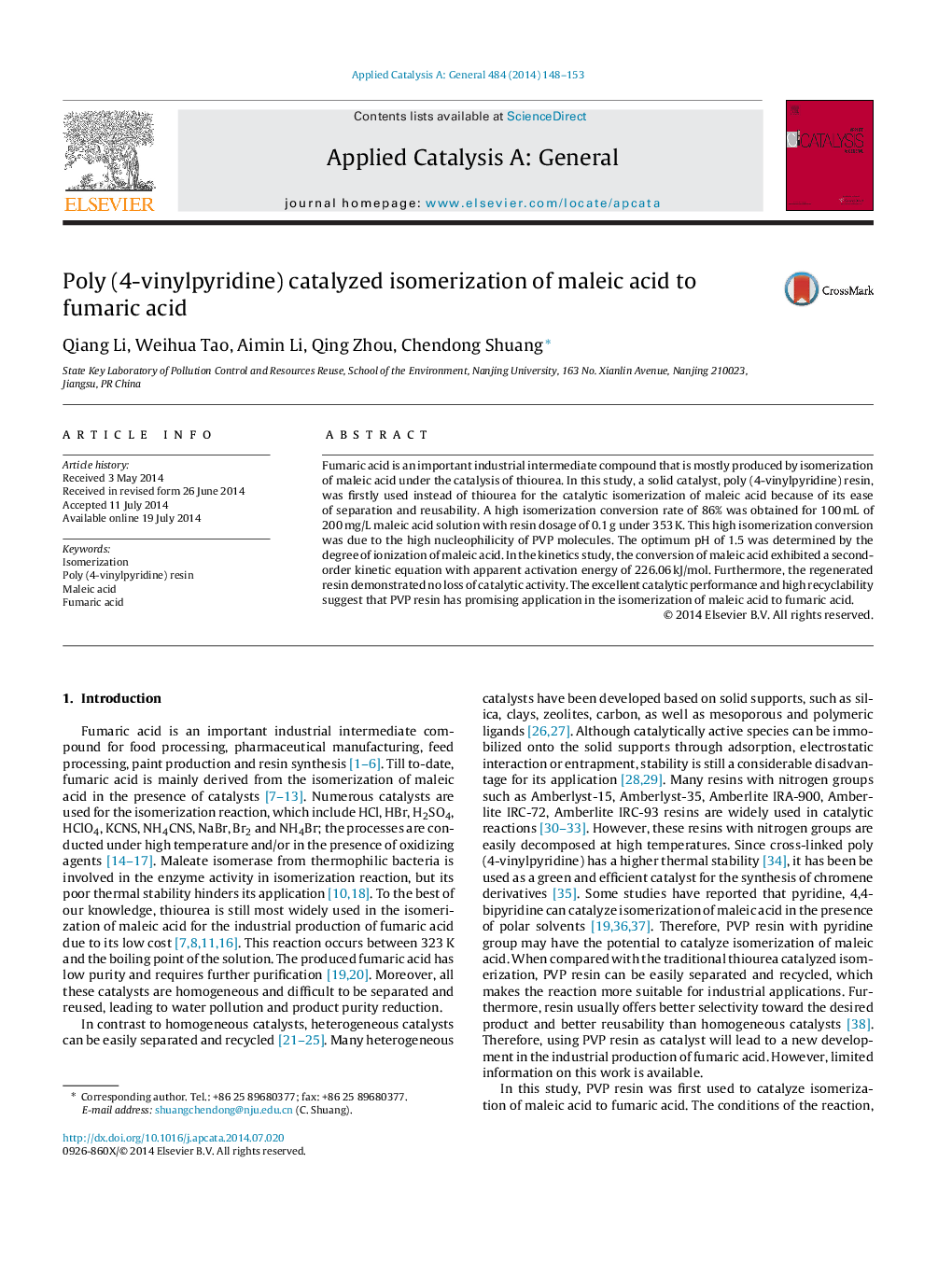| Article ID | Journal | Published Year | Pages | File Type |
|---|---|---|---|---|
| 39661 | Applied Catalysis A: General | 2014 | 6 Pages |
•PVP resin is used for the first time to catalyze the isomerization of maleic acid.•The optimized pH (1.5) was determined by the degree of ionization of maleic acid.•Second-order kinetic model fitted better than the first one in the overall reaction.•The apparent activation energy calculated for the reaction was 226.06 kJ/mol.•The regenerated P4VP resin can recover catalytic activity without any loss.
Fumaric acid is an important industrial intermediate compound that is mostly produced by isomerization of maleic acid under the catalysis of thiourea. In this study, a solid catalyst, poly (4-vinylpyridine) resin, was firstly used instead of thiourea for the catalytic isomerization of maleic acid because of its ease of separation and reusability. A high isomerization conversion rate of 86% was obtained for 100 mL of 200 mg/L maleic acid solution with resin dosage of 0.1 g under 353 K. This high isomerization conversion was due to the high nucleophilicity of PVP molecules. The optimum pH of 1.5 was determined by the degree of ionization of maleic acid. In the kinetics study, the conversion of maleic acid exhibited a second-order kinetic equation with apparent activation energy of 226.06 kJ/mol. Furthermore, the regenerated resin demonstrated no loss of catalytic activity. The excellent catalytic performance and high recyclability suggest that PVP resin has promising application in the isomerization of maleic acid to fumaric acid.
Graphical abstractFigure optionsDownload full-size imageDownload high-quality image (92 K)Download as PowerPoint slide
